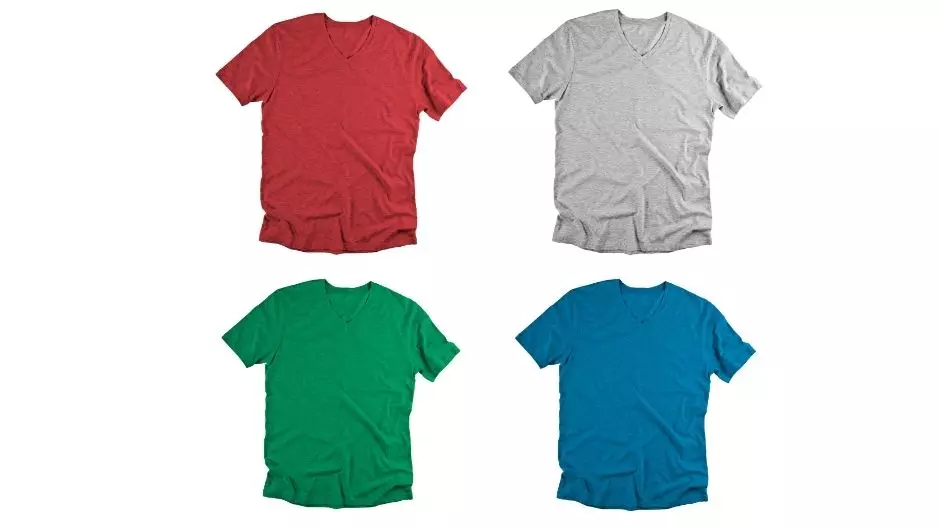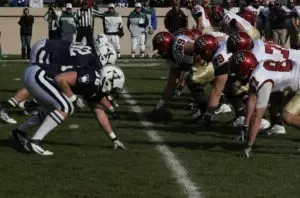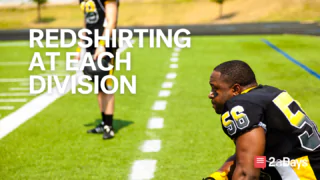Redshirting is something that most athletes don't envision themselves doing when they sign to a college. But, the truth is that it can be one of the best things a student-athlete can do for the long-run: it allows them to save a year of eligibility and develop, focus on the small details of their play, preserve their body, and allows them to focus on their education. There are many athletes who redshirted during their college career and still went on to find huge success in their sport. We gathered as much information as we could to educate you about redshirting and its nature.
Related: Pros and Cons of Redshirting
Type of Redshirts
Redshirt – this is the typical term people use to describe a player only practicing, but not participating in games. This typically happens early into their college career, which oftentimes allows them to catch up physically or get a head start academically. It allows a player to retain their scholarship and be a full-time student, while still participating in all team activities. Thanks to a rule implemented in 2018, college football players can play up to four games in a season and still keep their redshirt status.
Under the redshirt umbrella, there are other types for specific situations. A medical redshirt is given to an athlete who unfortunately suffers a season-ending injury, even if they already have used their general redshirt year. There are few stipulations with this though: a player can only have competed in 30% of their team's contests, and the injury must occur in the first half of the season.
The newly implemented academic redshirt is something that the NCAA requires schools to do if they have a player that cannot meet the school's academic standards. This uses up their general redshirt year.
Related: How Many Times Can You Redshirt?
Grayshirt
Grayshirting is a complicated topic. On the surface, a player in this situation is not a part of team activities and is only a part-time student during their first semester. They can be put on scholarship and fully participate at their school and sport at the start of their second semester. It places an athlete in a limbo; sometimes normal offers are changed into grayshirts at the last minute, which prevents an athlete from exploring their other options due to already being committed.
While it does give the athlete a promise of a scholarship at a later date, the offer might stand on hollow ground. But, on the other hand, a grayshirt can be a great thing for some athletes. Perhaps they need to develop physically or have an injury that would prevent them from participating anyway. Taking that time to rehab can make a big difference in the long run. In any case, taking the route of a grayshirt requires an athlete to be mentally strong. You're going to feel unsure of the future, so faith in yourself is a must.
Related: Grayshirt vs Redshirt: Pros and Cons
Greenshirt
A Greenshirt is very common for highly-recruited athletes, but has become more common in the last few years. This is when an athlete is an early-enrollee: someone who graduates high school in the fall and enrolls at their college in the spring. It gives an athlete the opportunity to start school early and get experience, while also putting them on the track to complete their undergraduate degree early as well. While still in high school, these athletes will be put on scholarship for that school year, so that they have a spot on the team once they start Spring term.
Due to many high school athletes losing a season because of COVID, there have been a few cases of athletes forgoing their senior year completely to graduate early, then enrolling in college immediately to get a leg up on competition.
Blueshirt
Blueshirting is a little-known way that schools use to bring in and offer more athletes. An athlete who was not recruited (or at least unofficially recruited) – one who never took an official visit or signed an official letter of intent – can receive an offer counting towards the next year's scholarship allotment. On paper, it appears as if a walk-on received an offer and came to that school of their own volition and interest.
Have an idea for a story or a question you need answered? Email us at [email protected]
* Originally published on January 12, 2022, by Isaac Haney







